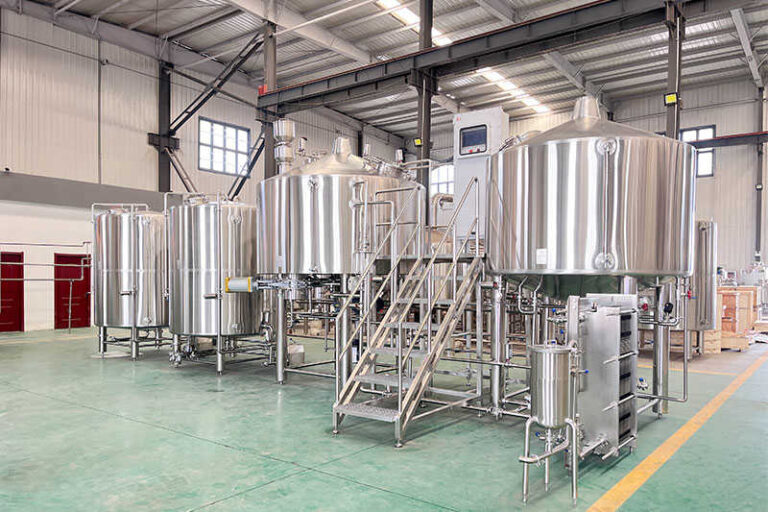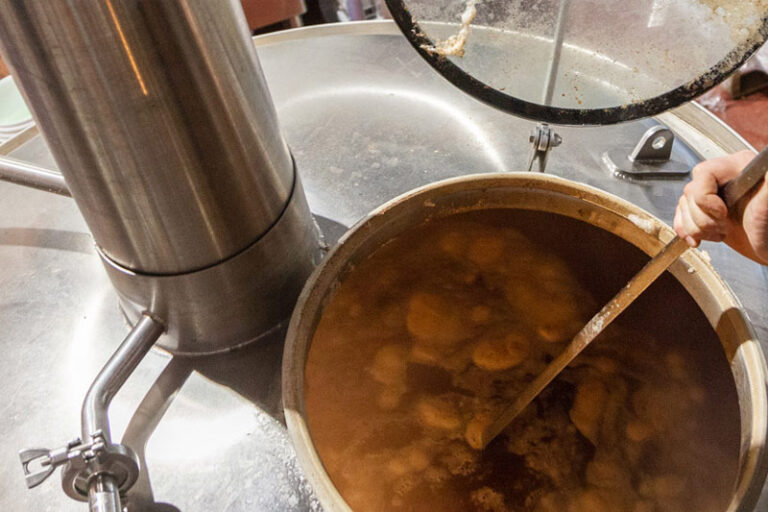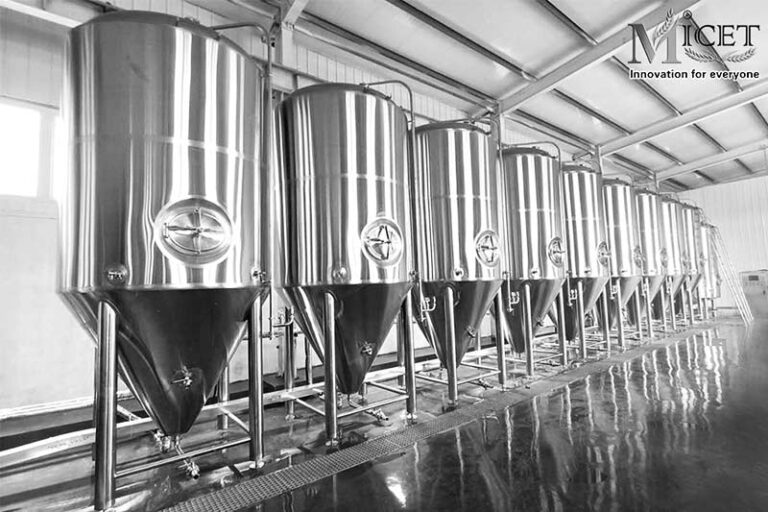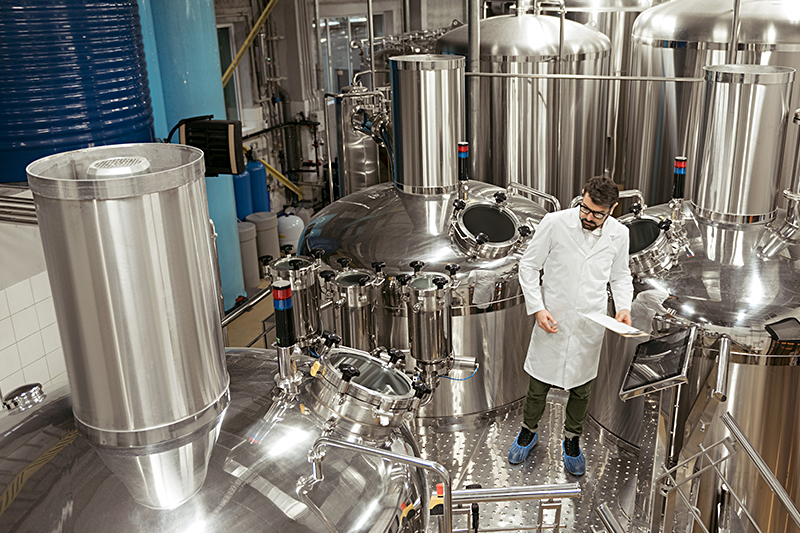Brewing tanks are indispensable equipment in the winemaking process. Whether it is fermentation, storage, or maturation, suitable brewing tanks can ensure the quality and flavor of the wine. Different types of brewing tanks differ in material, purpose, capacity, and function. Choosing the right brewing tank can not only improve production efficiency but also reduce losses and ensure the stability of the wine. Therefore, when choosing a brewing tank, it is necessary to comprehensively consider the type of wine, the material of the brewing tank, the storage conditions, and the economic budget to ensure that the brewing tank can meet your needs. This article will introduce the basic concepts of brewing tanks in detail, including common material types and how to choose the most suitable brewing tank according to your needs.
Basic overview of brewing tanks
Brewing tanks are containers used for fermentation, storage, and maturation of alcoholic beverages, and are suitable for different types of alcoholic beverages such as beer, wine, liquor, whiskey, etc. According to different uses, brewing tanks can be divided into fermentation tanks, storage tanks, bright tanks, and transport tanks.
Fermentation tank
The fermentation tank is the core equipment of alcohol fermentation, which is mainly used in the fermentation process of yeast. It needs to have good sealing to prevent contamination by bacteria, and should also be equipped with a temperature control system to ensure the stability of the fermentation environment. Beer, wine, and other alcoholic beverages have high-temperature requirements during the fermentation stage, so industrial brewing usually uses stainless steel fermentation tanks with cooling devices.
Storage tank
Storage tanks are used to store wine for short or long periods. They usually require good sealing and anti-oxidation capabilities to reduce the contact between the wine and the air and avoid oxidation. Different wines have different requirements for the material of storage tanks. For example, white wine can be stored in ceramic tanks or stainless steel tanks, while wine needs to be stored in an environment with suitable temperature and humidity, usually in oak barrels or glass tanks.
Bright tank
Bright tanks are used to further age the wine to improve its flavor. Oak barrels are the most common bright tanks, suitable for high-end wines such as wine, whiskey, and rum. The tannins and lignin in the oak barrels can give the wine a more complex taste and aroma. In addition, ceramic tanks are also common in the aging process of some traditional white wines and yellow wines.
Transport tank
Transport tanks are mainly used for bulk transportation of wine. They are usually made of high-strength stainless steel or food-grade plastic and are pressure-resistant and leak-proof. When large-scale wineries transport wine over long distances, they will choose stainless steel tanks with stronger pressure resistance to ensure the safety and stable quality of the wine.

Types of materials used in brewing tanks
Stainless steel tank
Stainless steel tanks are one of the most popular winemaking tanks, especially for industrial brewing and wineries that precisely control fermentation conditions. Tanks made of this material are extremely corrosion-resistant, durable, and very easy to clean. Since stainless steel tanks are not breathable, they can effectively isolate oxygen, thereby maintaining the freshness of the wine and preventing unnecessary oxidation. In addition, modern stainless steel tanks are usually equipped with temperature control systems that can accurately adjust the fermentation temperature to ensure the stability of the wine. This tank does not bring any additional flavor to the wine, so it can retain the pure characteristics of the grapes to the greatest extent, making its flavor more fresh and fruity. Stainless steel tanks are ideal for brewing refreshing white wines or fruity red wines.
Oak barrels
Oak barrels have been used for hundreds of years in the history of winemaking and are an important container for the maturation of high-end wines and spirits. The biggest feature of oak barrels is that they give the wine a rich flavor layer, including unique aromas such as vanilla, spices, caramel, coconut, and roasted nuts, while also making the wine more rounded and complex. The micro-oxygenation of oak barrels can slowly soften the tannins in the wine, making the taste smoother, and is suitable for maturing high-quality red or white wines. However, oak barrels require more manual maintenance than stainless steel tanks. They are not only expensive but also have a limited service life and usually need to be replaced regularly. In addition, oak barrels need to be cleaned and maintained regularly to prevent bacterial contamination. Despite this, oak barrels are still an irreplaceable choice for winemakers who want to enhance the complexity and layering of the wine.
Concrete tank
Concrete tanks are a type of winemaking container between stainless steel tanks and oak barrels and are still widely used in many European wineries. This type of tank has a certain degree of air permeability, which can provide the wine with micro-oxygenation similar to oak barrels, but it does not give the wine an additional wood flavor like oak barrels, so it can more purely show the flavor of the grapes themselves. Concrete tanks usually bring a delicate mineral feel, making the wine more rounded and balanced.
Plastic fermentation tank
Plastic fermentation tanks are popular with amateur winemakers and small wineries because they are lightweight and inexpensive. They are easy to operate and suitable for short-term fermentation or small-batch trials. However, plastic materials are less durable and prone to scratches, which can become a breeding ground for bacteria, thus affecting the quality of the wine. In addition, plastic tanks may absorb the color and taste of the wine during long-term use, causing subsequent wine to be contaminated. Compared with stainless steel tanks and oak barrels, plastic fermentation tanks have a shorter service life and are therefore usually only used for short-term fermentation and are not suitable for the aging or long-term storage of high-end wines.

How to choose the most suitable brewing tank?
When choosing a brewing tank, in addition to considering the material, you also need to consider the type of wine, production scale, storage requirements, and budget to ensure that the brewing tank can meet your own brewing needs.
- Choose according to the type of alcohol: Different wines have different requirements for the material of the brewing tank. For example, beer usually chooses stainless steel fermentation tanks, wine is suitable for aging in oak barrels, and white wine and yellow wine can be stored in ceramic tanks. When choosing, you should choose the appropriate brewing tank according to the characteristics of the wine to ensure the stability of the wine flavor.
- Consider the capacity: Small craft breweries or home brewing usually choose brewing tanks within 100L, while large wineries need brewing tanks of more than 1000L to ensure the stability of batch production. For wines that need to be stored for a long time, it is more economical to choose large-capacity storage tanks.
- Pay attention to the temperature control function: For alcoholic beverages that require precise control of fermentation temperature, such as beer, it is particularly important to choose a stainless steel fermentation tank with a cooling system. The aging of wine and whiskey is more dependent on the temperature and humidity of the storage environment, so oak barrels should be stored in a constant-temperature wine cellar.
- Economic budget: When the budget is limited, you can choose glass jars or plastic jars for short-term storage. For a medium budget, you can choose stainless steel tanks, which are suitable for most wines. For high-end wines, you can choose high-quality oak barrels or ceramic tanks to enhance the flavor of the wine.

Conclusion
Choosing the right brewing tank is crucial for beer brewing. The material, purpose, storage conditions, and budget must be considered comprehensively to ensure the stability of the wine’s quality and flavor. Reasonable selection of brewing tanks can not only improve brewing efficiency but also ensure the flavor and quality of the alcohol to meet the needs of different scenarios.

